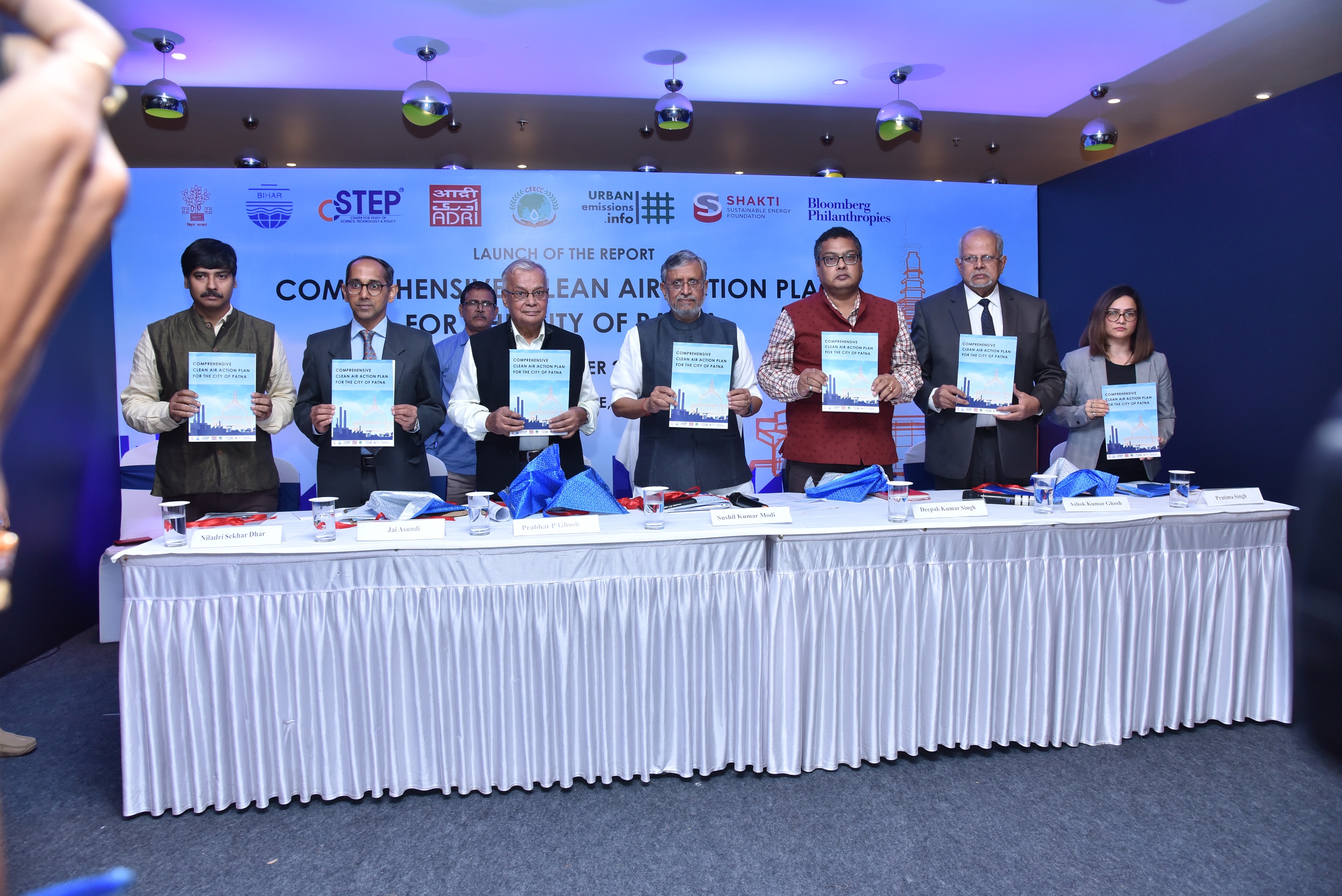Events of CSEC

Patna, November 23, 2019. Hon’ble Deputy Chief Minister of Bihar, Shri Sushil Kumar Modi launched the Patna Clean Air Action Plan (PCAAP) on November 23, 2019. Bihar State Pollution Control Board (BSPCB) has adopted the action plan developed by the Center for Study of Science, Technology and Policy (CSTEP) and Urban Emissions. The launch programme was organized by the Centre for Environment, Energy and Climate Change at the Asian Development Research Institute (CEECC, ADRI), Patna. This initiative has been supported by the Bloomberg Philanthropies and Shakti Sustainable Energy Foundation (SSEF).
Patna is one of 122 non-attainment cities identified by the Central Pollution Control Board. The Patna Clean Air Action Plan was prepared after extensive research on major polluting sectors and control measures to check the pollution from these sectors. Patna is the first city in the country to launch a comprehensive plan based on a scientific methodology adopted by the research groups. The study estimates that by 2030, under the business-as-usual (BAU) scenario, the total PM2.5 emission load will be approximately 28,000 tonnes/year (compared with 20,000 tonnes/year in the base year - 2018). Transportation, domestic, and industrial sectors were identified as major polluting sources contributing to the total PM2.5 emission load in 2030. The highest pollution-concentration (annual average) contributors in Patna are estimated to be outside sources—23%, domestic (including cooking, heating, and lighting)—21%, and transportation—19%. Apart from these, industries (12%), open waste burning (11%), dust (11%), and diesel generator (DG) sets (4%) contribute to the overall pollution.
In his Keynote Address, Shri Deepak Kumar Singh (IAS), Principal Secretary, Department of Environment, Forests and Climate Change, Government of Bihar, said the Government of Bihar is very active on air quality management in all major cities of the state. The action plan on air quality management would help us to take some serious scientific action.
The Chief Guest of the programme, Shri Sushil Kumar Modi, Hon’ble Deputy Chief Minister of Bihar, in his address highlighted the major factors contributing to air pollution in Patna. In order to initiate strict action against the contributing factors, the Bihar government has banned vehicles more than 15 years old in Patna. He also said that there is a need of introducing new scrapping policy for managing the old vehicles. He said by 2020, in order to compensate for converting the three-wheelers to cleaner fuel technology, the Bihar government is providing a subsidy of Rs 40, 000. Further, to ease the access to PUC centers in Patna, more number of such centers have been provided by easing the criteria for running a PUC center. E-vehicles have also been promoted by reducing the road tax levy and increasing more numbers of charging stations. In order to create mass awareness among public about e-vehicles, the Chief Minister and Deputy Chief Minister are using electric cars. He also urged experts to present the status of air quality every year to the government. In order to promote mass awareness on air pollution, he urged all media houses to dedicate a section of their daily news to air quality status of the city. At the end the minister also appreciated the efforts taken by CEECC, ADRI and other consortium partners to formulate the comprehensive action plan.
In his special address, Professor Ashok Kumar Ghosh, Chairman, BSPCB highlighted the critical impact of air pollution on human health and other aspects of well-being. He also shared his views on the relevance of the action plan and constituting Programme Management Unit (PMU) for the effective compliance of the PCAAP.
Dr Pratima Singh, Research Scientist at CSTEP, who headed the study, highlighted the list of control measures for the various polluting sectors. “We compared technologies and the cost of implementing them; this helped us identify measures with the highest potential to reduce pollution and save lives. We estimate that under the best-case scenario, Patna city will be able to reduce emissions by 69% by 2030.”
According to the study increasing the share of public transport to 40% by introducing EVs and CNG vehicles could reduce transport sector emissions by about 10%. Around 90% of emissions from waste burning could be reduced by ensuring proper solid waste management facilities and enforcing stricter laws on garbage burning. Ensuring that all the brick kilns convert to zigzag kiln from Fixed Chimney Kiln will help reduce 34% of the emissions from the brick kilns sector.